Green architecture – Dell Children’s Medical Center
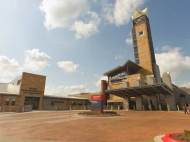 This example of green architecture isn’t quite new, but it has a great design and it was a first of its kind. The Dell Children’s Medical Center of Central Texas has been awarded LEED Platinum certification from the U.S. Green Building Council, as the first hospital in the world that achieved such status. The 43,665 square meters hospital opened in June 2007 on 32 acres which once belonged to the former Mueller Municipal Airport, which has become one of the largest redevelopment efforts in the City of Austin’s history.
This example of green architecture isn’t quite new, but it has a great design and it was a first of its kind. The Dell Children’s Medical Center of Central Texas has been awarded LEED Platinum certification from the U.S. Green Building Council, as the first hospital in the world that achieved such status. The 43,665 square meters hospital opened in June 2007 on 32 acres which once belonged to the former Mueller Municipal Airport, which has become one of the largest redevelopment efforts in the City of Austin’s history.
Designed by Karlsberger architects, the building scored high on recycling, since the 92 percent of construction waste was reused on site (among other materials, 47,000 tons of Mueller airport runway material was reused for parking lots and garages). About 40% fly ash that was used instead of Portland cement in the concrete mix yields a drop in carbon dioxide emissions equivalent to taking 450 cars off the road. Sustainable and indigenous building materials, as white Texas limestone, recycled glass and rapidly-renewable cork, were used throughout the hospital’s exterior façade, flooring and walls.
Inside the hospital, windows of varying shapes, sizes and color line almost every wall, providing daylight to 80 percent of the facility and to patients and staff located within 10 meters of an exterior wall. Motion and natural light sensors are incorporated to shut off unneeded lights and save energy. Special paints and flooring that emits low levels of volatile organic compounds (VOCs) were used. The low flow plumbing fixtures are used in order to lessen the water usage.
An on-site 4.3-megawatt natural gas turbine (75 percent more efficient than coal-fired plants) supplies the needed electricity and links to the municipal grid and an emergency generator that provides backup power. It is able to produce 100 percent of the hospital’s electricity, heating and cooling. Converted steam energy from a heating/cooling plant supplies all chilled water needs. Other cooling features that contribute to the hospital’s energy efficiency include reflective roofing and surface pavements, and an under-floor air distribution system that requires less power to operate than a traditional ceiling system. Parking lot trees and reflective surface pavement and roof materials reduce the heat-island effect.
Sustainable elements such as abundant natural light, renewable building materials and an on-site power plant were all incorporated in the hospital’s site plan, but the project’s most important design goal was to provide a playful healing environment for children. A three-acre, multi-level healing garden is a highlight of the hospital. Articulated by passive and active spaces, it includes a multimedia movie plaza, labyrinth, human sundial, butterfly garden, floating stone fountain and reflecting pond.
Another notable feature within the hospital’s central courtyard is a three-story water way, which cascades down a granite wall into a serpentine stream, then flows over a rock waterfall into a reflecting pool. Reclaimed water is used for irrigation and xeriscaped landscaping uses native and adaptive plants were implemented throughout these courtyards, which not only conserve water but help provide clean, oxygenated air for air-handling units on each of the hospital’s four floors.
“We designed various courtyard environments to reflect the biodiversity of Central Texas by incorporating six eco-regions, each corresponding to a distinct area of the hospital’s 46-county service region,” said Brian Ott, principal at TBG Partners, the project’s landscape architect. “This helps connect patients and family members with the familiar environments they grew up around. Since the installments, Dell Children’s has received widespread acclaim for combining cutting-edge medical technology with art and green building design to create a cohesive healing environment.”

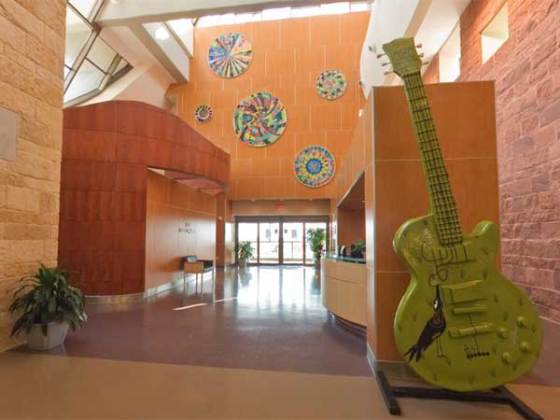
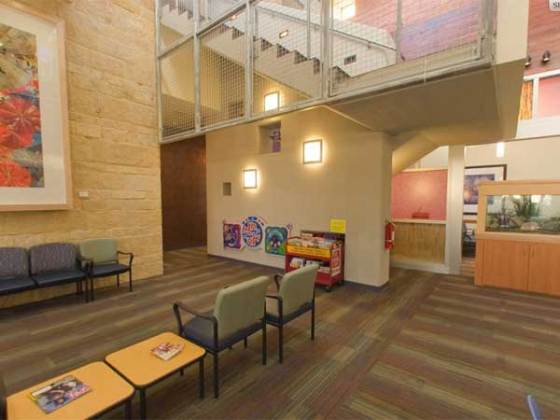
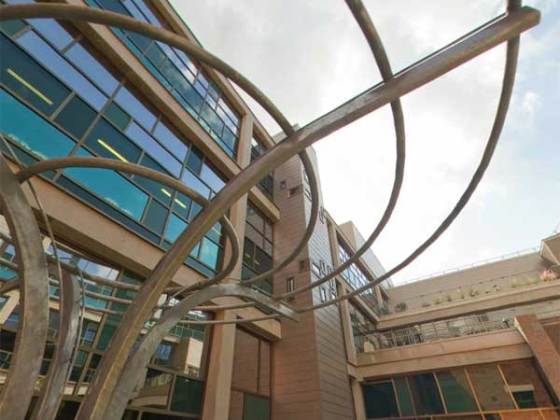
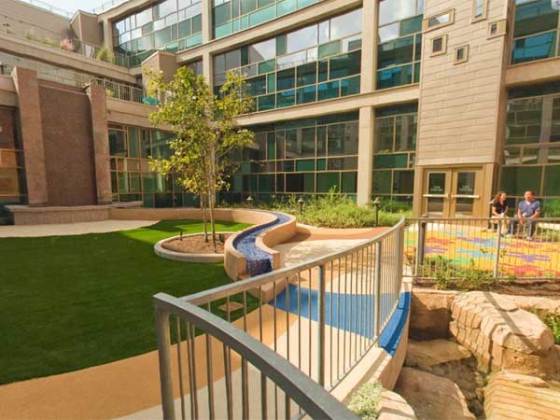








This definitely looks like the hospital of the future. The building construction for a project of this size must have take a lot of time. I have read that outfitting hospitals with green supplies is a very lucrative business. This hospital is not only functional, it is aesthetically pleasing as well. I really like the various courtyard environments that they have set up on site, it is a great way to take patient’s minds off of being in a hospital. If you want to stay updated on construction topics such as this one, take a look at McGraw Hill’s Texas Construction Site. It has a ton of valuable information on upcoming and current building projects around Texas. While I am fortunate enough to do some work with McGraw Hill, they have been a favorite construction resource of mine for quite some time now. If you are like me and enjoy learning about projects like this one, check out their website.